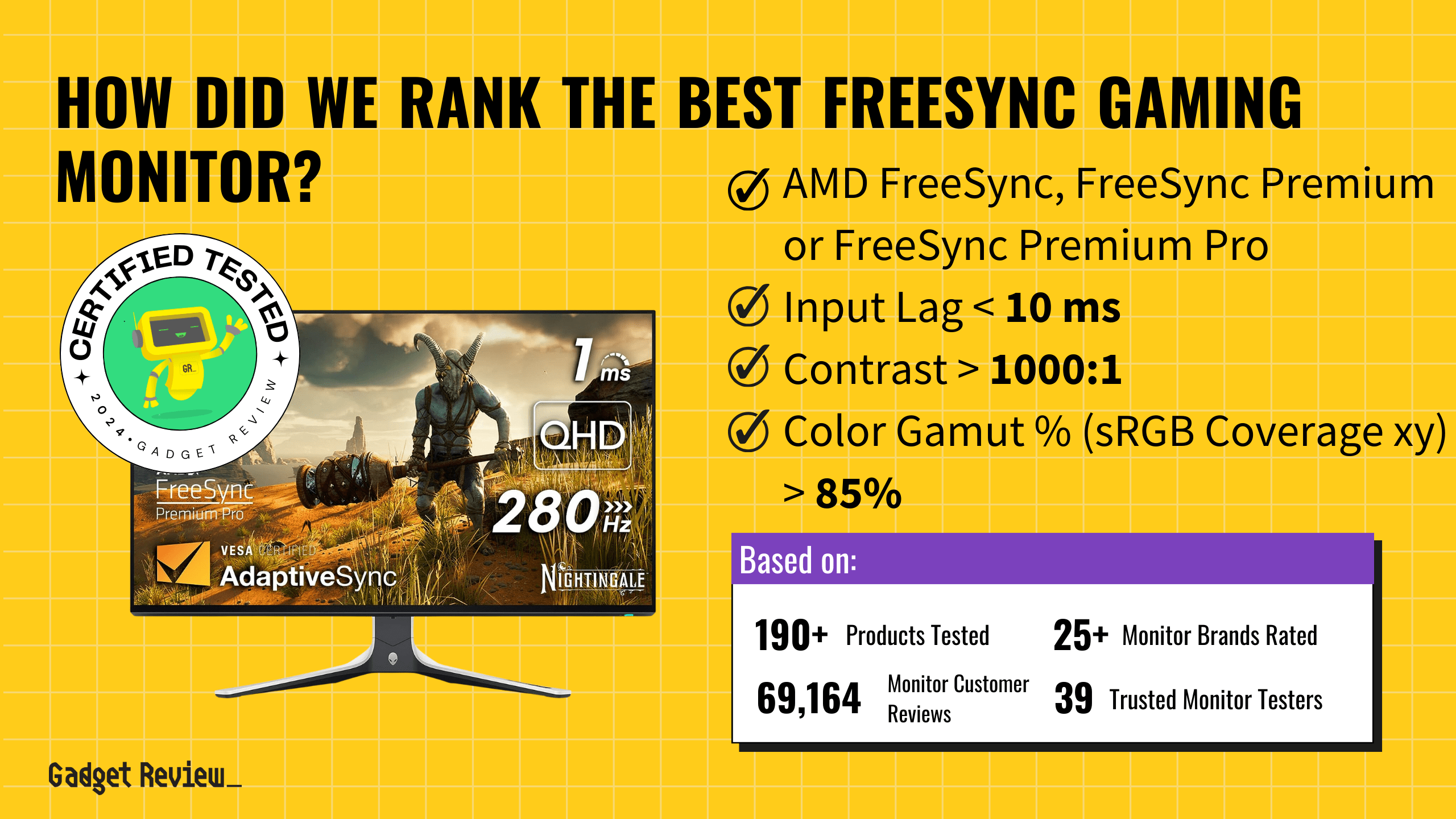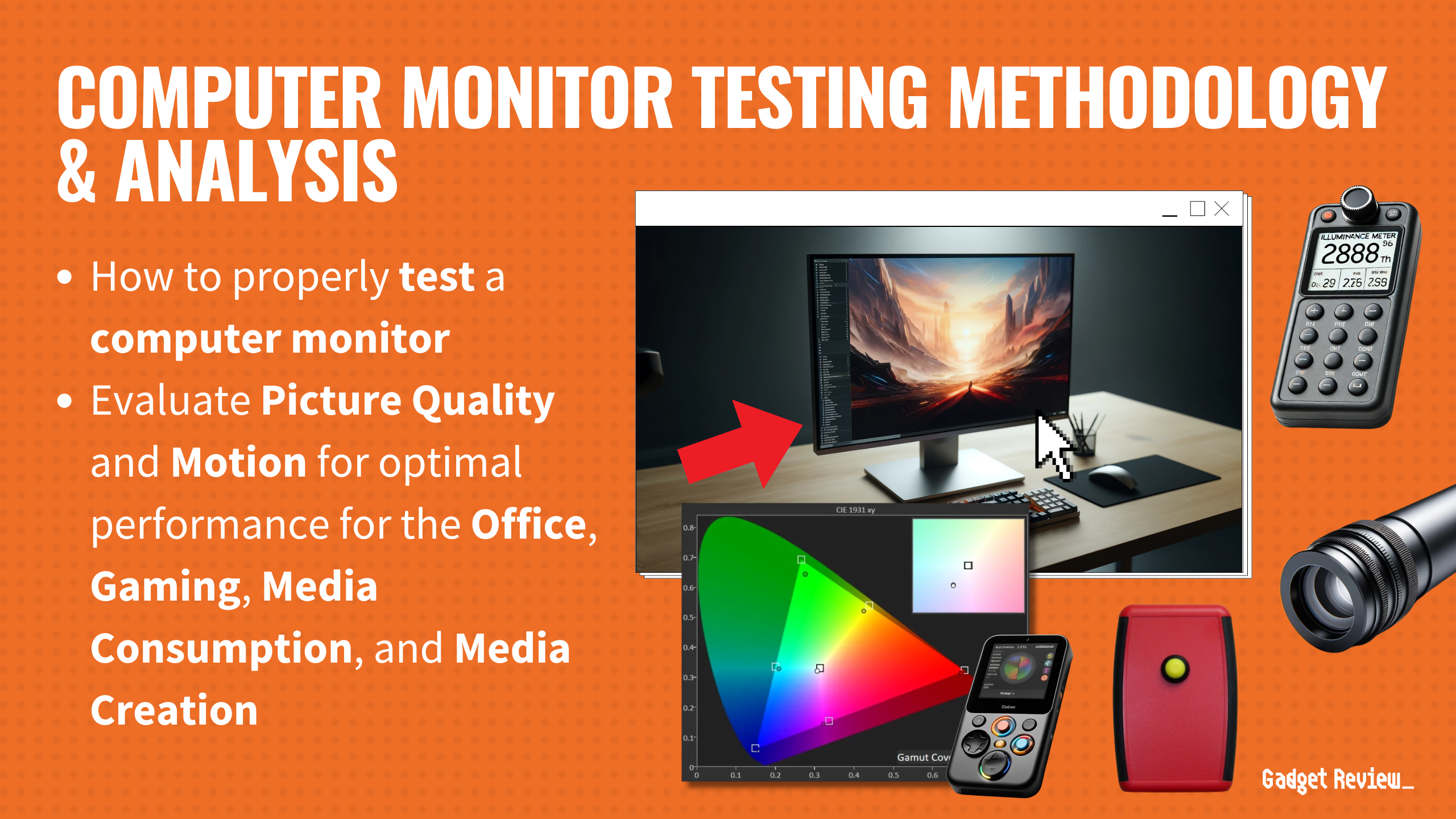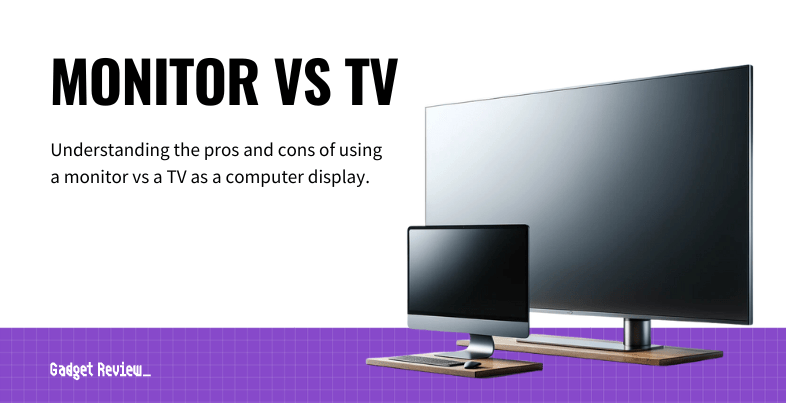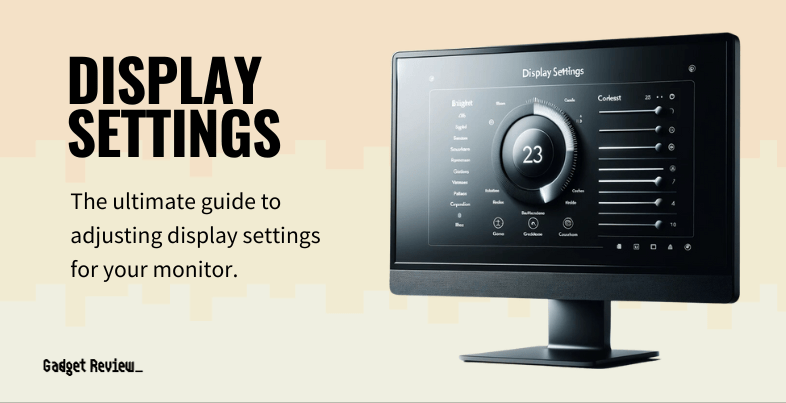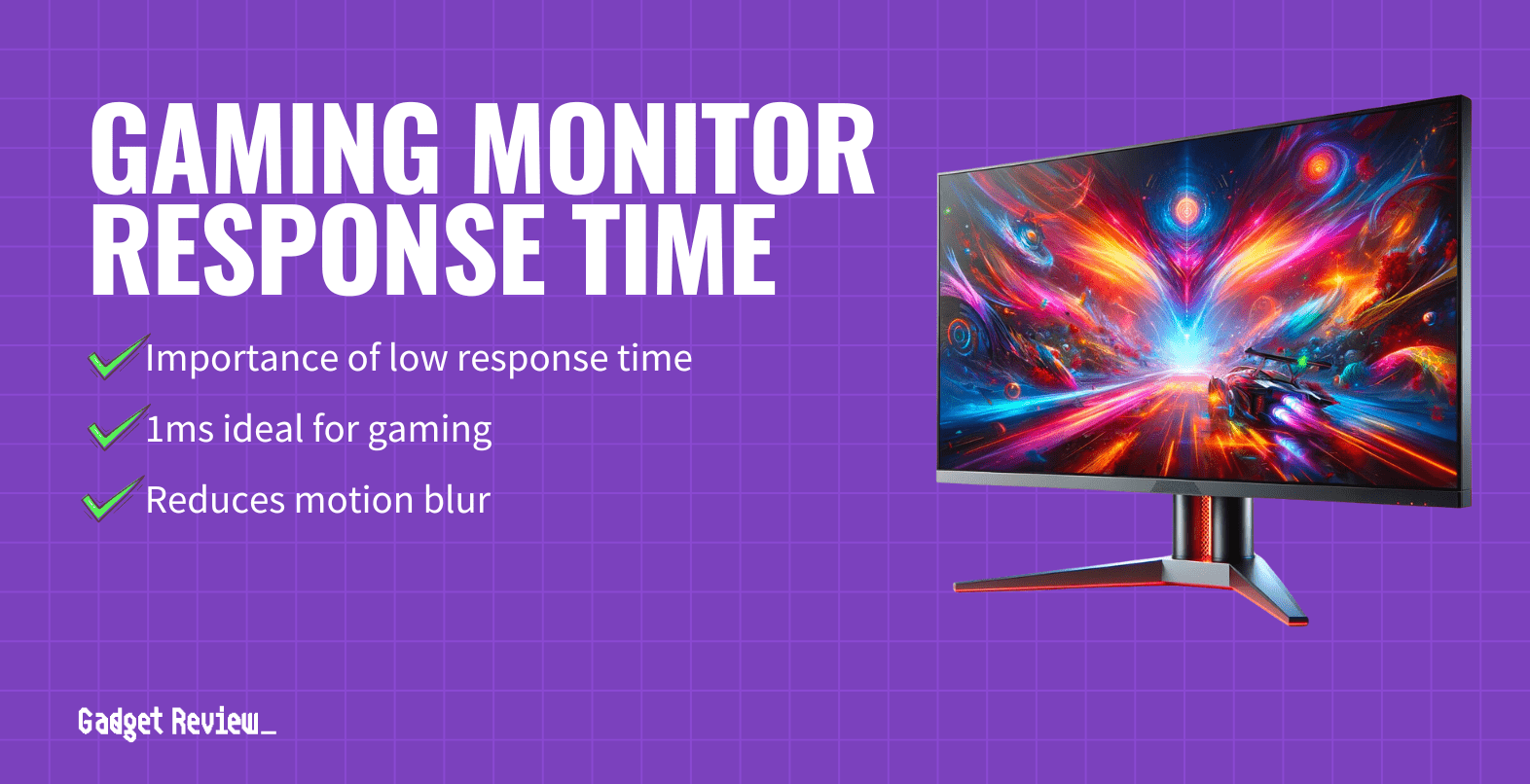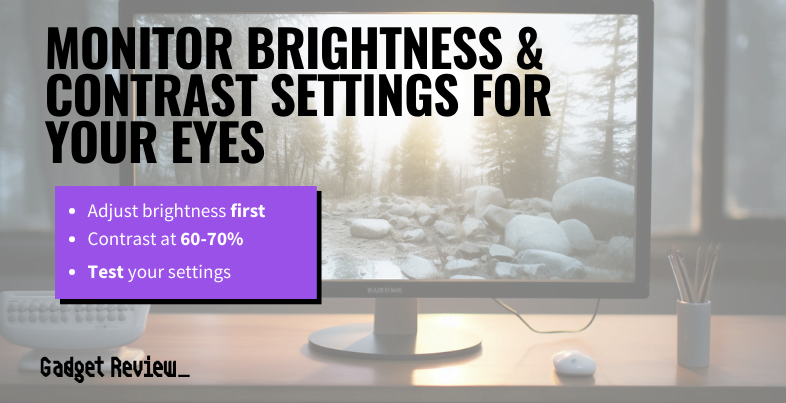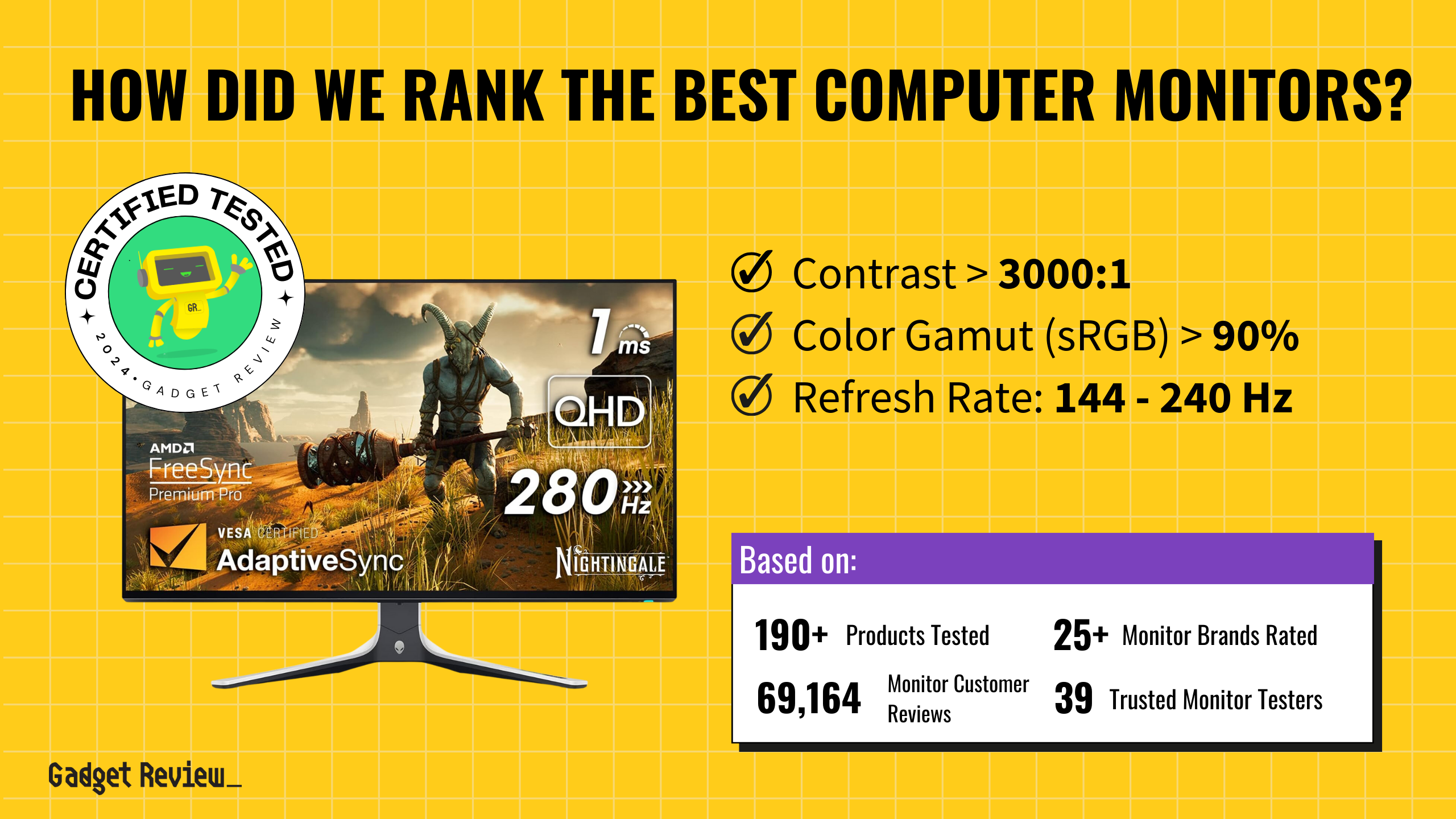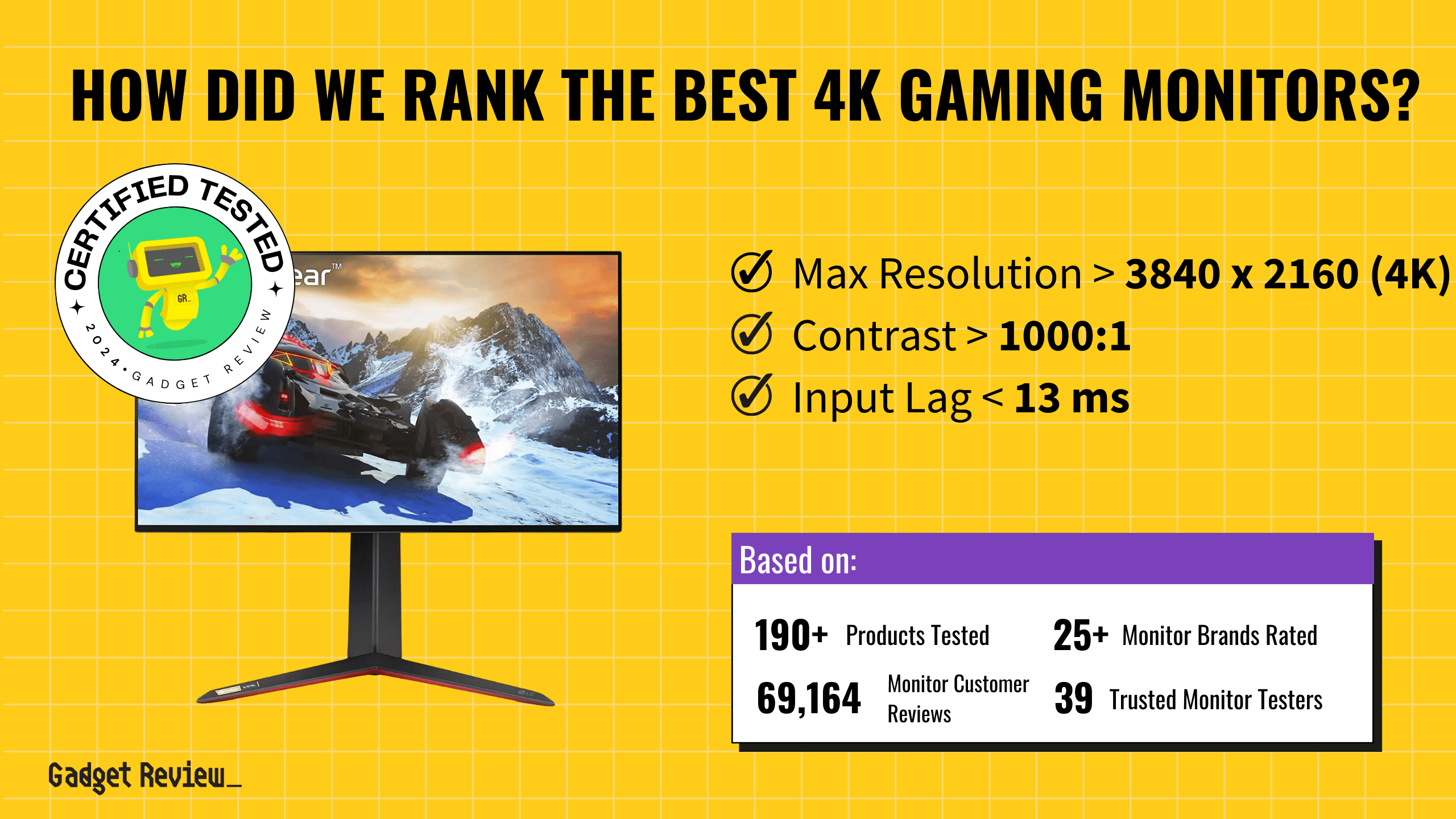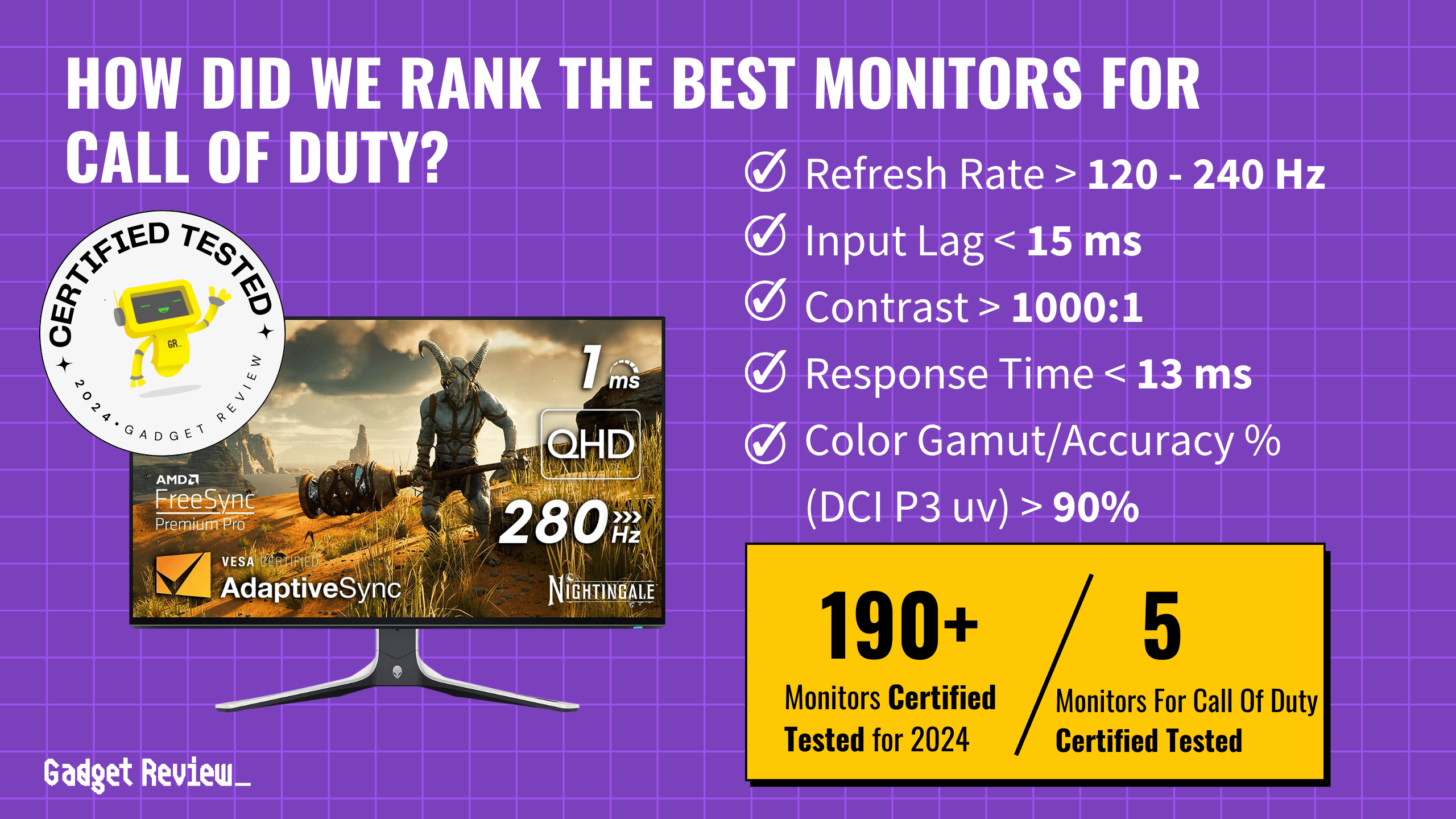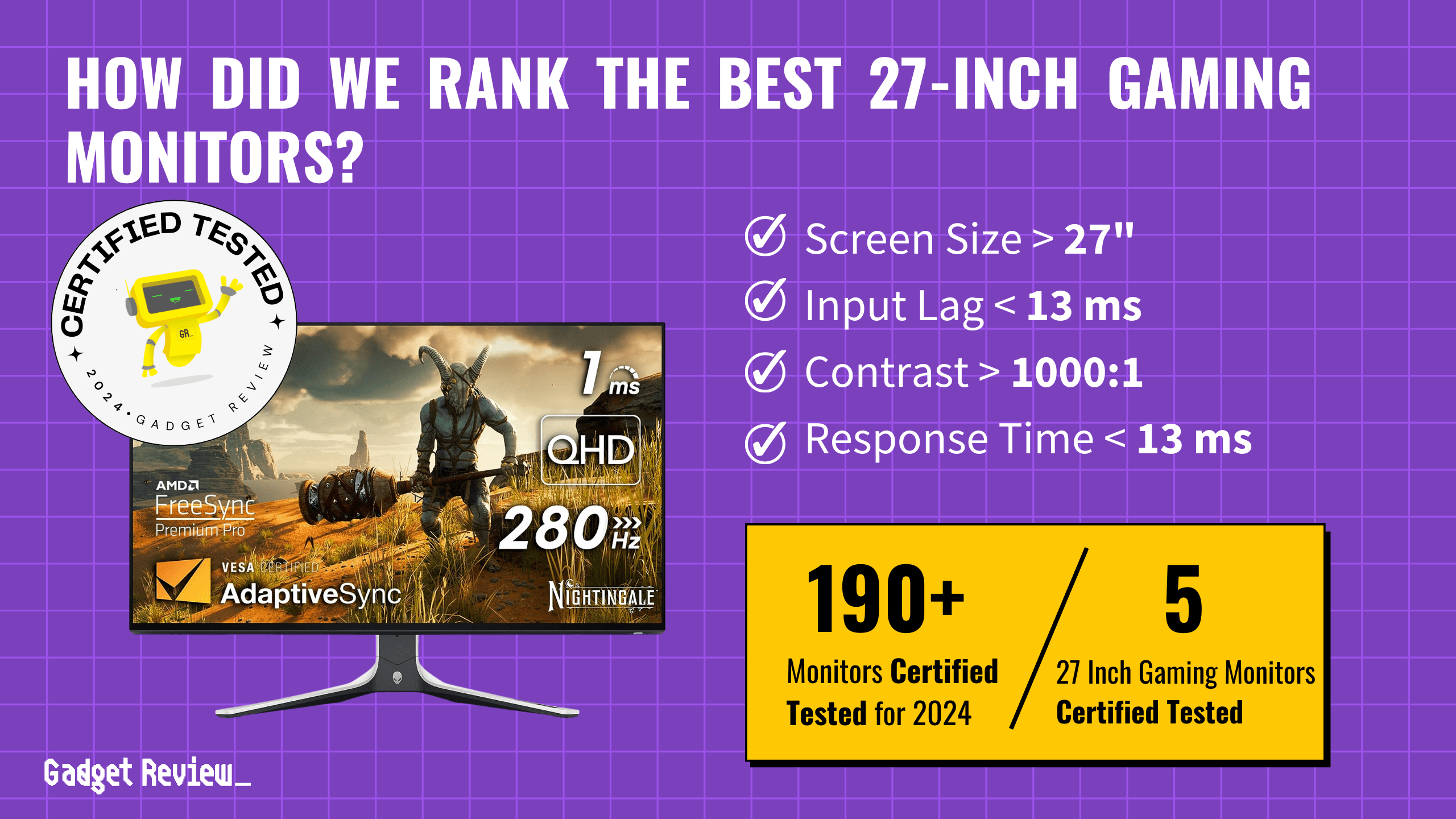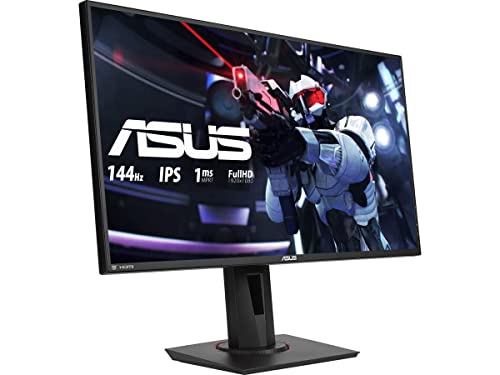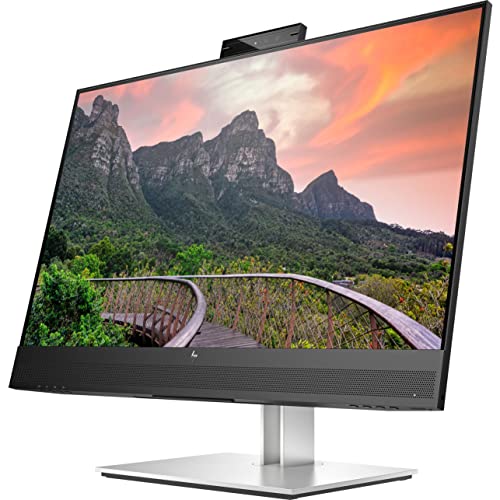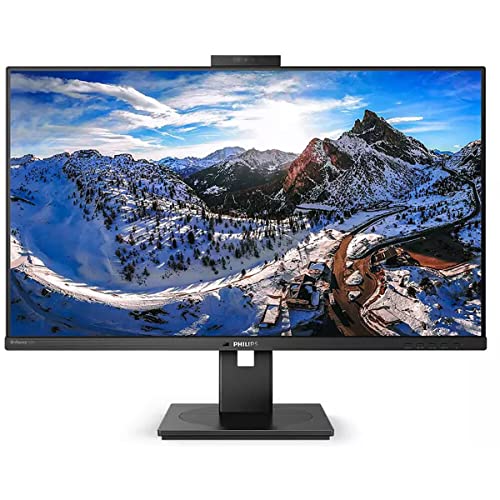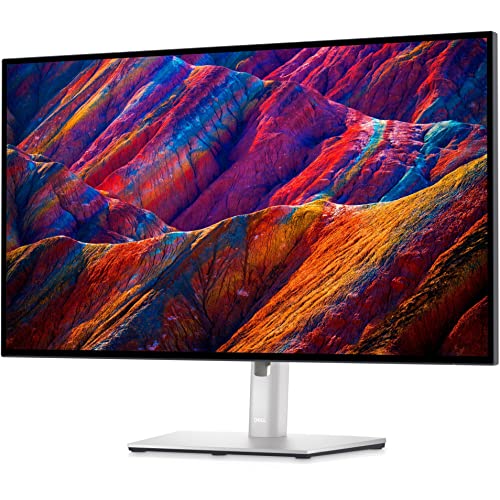To choose the best FreeSync monitor, focus on key features like AMD FreeSync technology to prevent screen tearing and stuttering. Ensure the monitor has a low input lag of less than 10ms for responsive control, a high contrast ratio for visual depth, and good brightness for clear visibility in various lighting conditions. Wide color gamut coverage and a low response time are also essential to provide vibrant colors and smooth image transitions.
In our comprehensive analysis, 5 monitors made it to our buying guide after evaluating 196 models and analyzing 319,952 reviews. Our unique process involves certifying products as tested and filtering out fake and low quality reviews, resulting in a 71% failure rate for untrustworthy experts. The winning monitors excelled in our tests, showing excellent performance in key areas like input lag, contrast ratio, and color accuracy.
Additionally, for those interested in other synchronization technologies, we have a guide for the best G-Sync monitors. Beyond synchronization, we also have models that stand out as the best computer monitor and top gaming monitors, catering to a variety of needs and specifications.
How Did We Rank the Best FreeSync Gaming Monitors?
We analyzed expert reviews and customer feedback from more than 200 sources to rank the best FreeSync gaming monitors. Our methodology identifies 2 must-have specifications, 1 beneficial features, and 1 critical test results, ensuring our recommendations are accurate and reliable. Our true score system distills essential criteria, highlighting monitors that deliver top-tier performance.
Our commitment to unbiased reviews is powered by our ‘True Score’ system, targeting low quality and fake reviews. When you shop through our links, you’re backing our mission. Dive deeper to see how.
?️ Minimum Specifications
- Must have greater than AMD FreeSync technology.
? Test Criteria
- Input Lag: An input lag of less than 10 milliseconds ensures a highly responsive gaming experience with minimal delay between action and on-screen response.
- Contrast Ratio: 1000:1 or higher, offering deep blacks and bright whites for an exceptional viewing experience.
? “Nice To Haves”
- Color Accuracy: At least 85% of the (sRGB Coverage xy) color gamut, providing rich and vibrant colors.
Latest Updates
- 04/30/2024: Republished the list to include the best FreeSync monitors based on our True Score system.
Top FreeSync Gaming Monitors For 2025
Prices accurate at the time of publishing

Best Overall

Runner Up

Best Value

Best Budget

Best Mid-Range

Premium Pick
HP OMEN 27QS
Best For PS4
The HP OMEN 27QS excels for budget-conscious gamers and creatives. It offers a 240 Hz refresh rate, good brightness, and high color coverage for smooth, vibrant gameplay, enhanced by FreeSync.
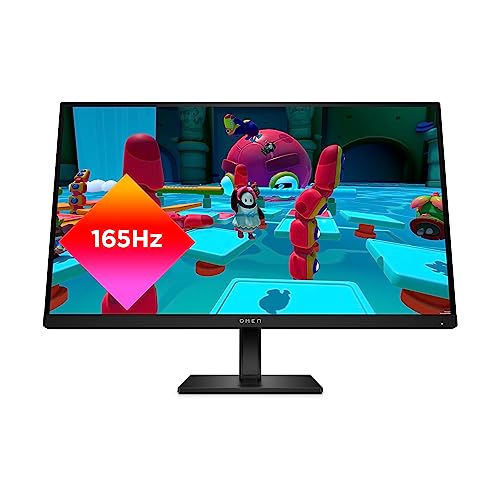
True Score
85834Experts
911kCustomers
Absolutely Fresh
 SAVE $100$299.99$199.99
SAVE $100$299.99$199.99Snapshot
Reasons to Buy
- Good Image quality
- Low response time
- Low input lag
- High refresh rate
Reasons to Avoid
- Low contrast ratio
Specifications

Aspect Ratio 16:9 
Available Inputs 3.5mm, DisplayPort, HDMI, USB 
Bluelight Filter Yes 
Built-In Speakers Yes 
Built-In Webcam No 
Curved Screen No Display Type LED 
Flicker Free Yes HDMI Inputs 2 HDR Format HDR10, HDR400 High Dynamic Range (HDR) Yes Max Resolution 2560 x 1440 
Panel Type IPS Refresh Rate 240 Hz 
Response Time 1 ms 
Rotating Screen Yes Screen size 27″ 
Sync Technology AMD FreeSync Premium, G-Sync All Specs
Test Results
Brightness (nits) 390 Contrast Ratio (as ratio, x:1) 1,014 Color Gamut/Accuracy % (DCI P3 xy) 94 Color Gamut/Accuracy % (DCI P3 uv) 0 Color Gamut % (Adobe RGB Coverage xy) 86 Color Gamut % (sRGB Coverage xy) 100 All Retailers
- $199.99$300Save $100
Availability
In StockFree Shipping
Yes - $379.99$480Save $100
Availability
In StockFree Shipping
Yes - $429.00
Availability
In StockFree Shipping
No
Our Verdict
The HP OMEN 27QS is an outstanding monitor for gamers on a budget who value high performance and cost-effectiveness, featuring a swift 240 Hz refresh rate and sharp 1440p resolution. This monitor performs well in competitive gaming and esports, where its best-in-class 4.2 ms response time and 8.5 ms input lag minimize motion blur and ensure rapid response, making it perfect for those who demand speed and accuracy. Its FreeSync support offers smooth, tear-free gaming, making it a preferred choice for those with AMD graphics cards seeking fluid gameplay.
If you prioritize vibrant colors and detailed visuals, whether in gaming or color-sensitive tasks like graphic design, the 27QS delivers with its 94.4% DCI-P3 color gamut and HDR400 support. These features ensure that your digital content is smooth and visually stunning with an array of colors. Its 389.5 nits and contrast ratio of 1014:1 brightness means that images are both bright and rich in detail, even in well-lit rooms, along with a best-in-class reflective rate of 4.8% helps reduce glare, maintaining clarity from all angles. Compared to the Dell G2724D, the Dell is better suited for bright environments, but if you’re a creative professional who needs accurate colors for your work, such as photography or graphic design, then the HP would be a better fit for your lifestyle.
The HP OMEN 27QS is a comprehensive solution for gamers, streamers, and creative professionals looking for a monitor that offers a blend of responsive high-speed performance and superior image quality without sacrificing affordability. Despite having the lowest contrast ratio on the list, it’s still a versatile, well-rounded choice, particularly for those leveraging AMD’s FreeSync technology, ensuring compatibility and optimized performance across various gaming and creative applications.

Best Overall

Runner Up

Best Value

Best Budget

Best Mid-Range

Premium Pick
LG 27GP950-B
Best For 4K Gaming
The LG 27GP950-B excels with 4K resolution and 144 Hz refresh rate, perfect for gaming and creative work, offering superior color accuracy and smooth performance, enhanced by FreeSync.
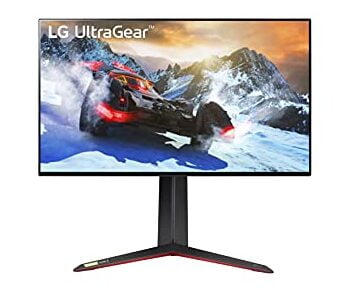
True Score
82834Experts
87903Customers
Absolutely Fresh
 SAVE $423$899.99$476.99
SAVE $423$899.99$476.99Snapshot
Reasons to Buy
- 4K resolution delivers great picture quality
- High peak brightness level
- Great color accuracy
- HDMI 2.1 ports for connectivity to modern consoles
- Support for HDR content
Reasons to Avoid
- Low contrast
- Poor reflection handling
- So-so ergonomics
Specifications

Available Inputs 3.5mm, DisplayPort, HDMI, USB 
Bluelight Filter n/a 
Built-In Speakers No 
Built-In Webcam No 
Curved Screen No Display Type IPS 
Flicker Free Yes HDMI Inputs 2 HDR Format HDR10, HDR600 High Dynamic Range (HDR) Yes Max Resolution 3840 x 2160 (4k) 
Panel Type IPS Refresh Rate 144 Hz 
Response Time 1 ms 
Rotating Screen Yes Screen size 27″ 
Sync Technology AMD FreeSync, AMD FreeSync Premium Pro, G-Sync All Specs
Test Results
Brightness (nits) 410 Contrast Ratio (as ratio x:1) 1,194 Color Gamut/Accuracy % (DCI P3 xy) 97 Color Gamut/Accuracy % (DCI P3 uv) 0 Color Gamut % (sRGB Coverage xy) 100 Color Gamut % (Adobe RGB Coverage xy) 88 All Retailers
- $476.99$900Save $423
Availability
In StockFree Shipping
Yes - $496.99$897Save $400
Availability
In StockFree Shipping
- $896.99$937Save $40
Availability
In StockFree Shipping
No - $899.99
Availability
In StockFree Shipping
Yes
Our Verdict
The LG 27GP950-B is an outstanding solution for gamers and creative professionals who demand impeccable color accuracy and high performance in well-lit environments, offering a 4K resolution at a 144 Hz refresh rate. This refresh rate is optimal for competitive gaming, ensuring smooth action. The best-in-class 96.8% DCI P3 color gamut and HDR600 support deliver unmatched visual quality, crucial for those who value vibrant colors and deep contrasts. With a high 410 nits of brightness and an 1194:1 contrast ratio, it provides detailed and accurately colored visuals with deep black and bright white levels, ideal for graphic design, video editing, and content creation.
If you play fast-paced video games and/or are an esports athlete, the 4.4 ms response time and best-in-class 4.2 ms input lag guarantee a fluid, responsive gameplay experience. This monitor excels with its 4K resolution, catering to users seeking the highest visual fidelity in gaming and creative work. Its FreeSync compatibility ensures smooth, tear-free gaming for those with AMD graphics cards, enhancing gameplay across various systems.
Ideal for a wide array of uses beyond gaming, such as streaming and professional editing, the LG 27GP950-B balances high-resolution performance, minimal input lag, and exceptional color accuracy. Despite its high price, its comprehensive capabilities justify the investment if you seek a top-tier monitor that enhances gaming and creative projects with FreeSync support for optimal performance.

Best Overall

Runner Up

Best Value

Best Budget

Best Mid-Range

Premium Pick
Dell G2724D
The Dell G2724D excels for gamers with bright rooms seeking performance and value, featuring a 165 Hz refresh rate and FreeSync for smooth, tear-free gaming, all in a bright, contrast-rich display.
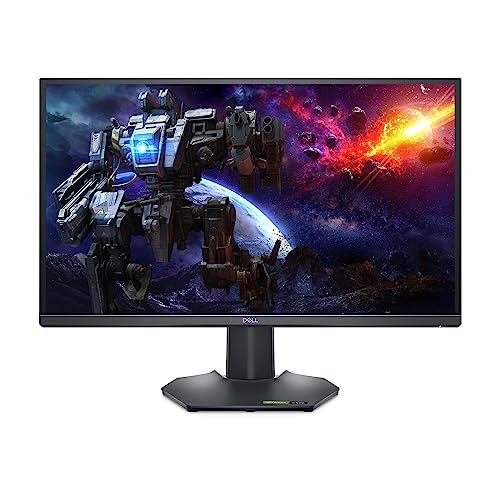
True Score
82822Experts
88126Customers
Absolutely Fresh
 SAVE $50$299.99$250.00
SAVE $50$299.99$250.00Snapshot
Reasons to Buy
- Great image quality
- Low Input lag
- High native refresh rate
Reasons to Avoid
- Subpar contrast ratio and HDR color gamut
- Okay response time
- No HDMI 2.1 and USB ports
Specifications

Aspect Ratio 16:9 
Available Inputs DisplayPort, HDMI 
Bluelight Filter Yes 
Built-In Speakers No 
Built-In Webcam No 
Curved Screen No Display Type LED 
Flicker Free Yes HDMI Inputs 2 HDR Format HDR10, HDR400 High Dynamic Range (HDR) Yes Max Resolution 2560 x 1440 
Panel Type IPS Refresh Rate 165 Hz 
Response Time 1 ms 
Rotating Screen Yes Screen size 27″ 
Sync Technology AMD FreeSync Premium, G-Sync, VESA Adaptive-Sync All Specs
Test Results
Brightness (nits) 432 Contrast Ratio (as ratio, x:1) 1,350 Color Gamut/Accuracy % (DCI P3 xy) 86 Color Gamut/Accuracy % (DCI P3 uv) 0 Color Gamut % (Adobe RGB Coverage xy) 82 Color Gamut % (sRGB Coverage xy) 100 All Retailers
- $250.00$300Save $50
Availability
In StockFree Shipping
No
Our Verdict
The Dell G2724D is a great pick for gamers valuing affordability and robust performance, especially under bright lighting. With a 165 Hz refresh rate and 4.3 ms response time at 1440p resolution, it caters to competitive and casual gaming enthusiasts. Offering an edge with its superior brightness and contrast over the LG 27GP950-B, which leads in color accuracy, the G2724D focuses on delivering crisp visuals.
If you’re an avid gamer who cares about speed during your games, the Dell’s 9 ms input lag ensures a responsive gaming session. Highlighted by its FreeSync compatibility, it offers smooth, tear-free visuals, a boon for gamers looking for an edge in rapid gameplay scenarios. While its 86.4% DCI P3 color gamut and HDR400 support may not top the list, they still provide vibrant color fidelity and contrast. A best-in-class brightness of 432 nits and unparalleled 1350:1 contrast ratio guarantee vivid colors and deep blacks, even in well-lit spaces, complemented by a reflection rate of 4.8% to reduce glare effectively.
Optimized for use in bright environments without sacrificing color accuracy, the Dell G2724D is a well-balanced choice for gamers and daily users. It offers high responsiveness, luminous display quality, and adaptive sync capabilities for work and play. Despite its color gamut limitations, its unmatched brightness and contrast make it a versatile, high-performing monitor for those prioritizing FreeSync for fluid, adaptive gameplay without the high-end price tag.

Best Overall

Runner Up

Best Value

Best Budget

Best Mid-Range

Premium Pick
Alienware AW2723DF
Best For Nintendo Switch
The Alienware AW2723DF excels for gamers and creatives with its 1440p, 240 Hz refresh rate, and FreeSync support, offering tear-free, vibrant gameplay and professional-grade color accuracy in well-lit environments.
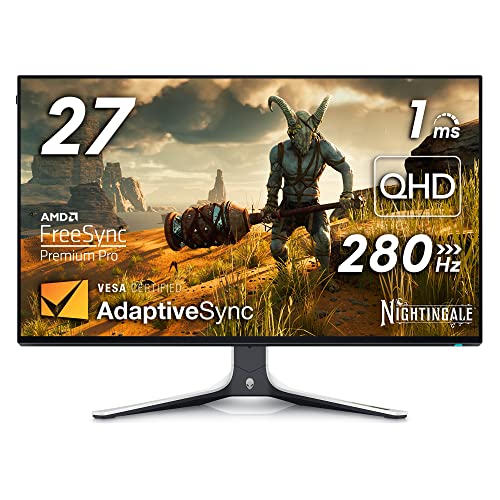
True Score
78804Experts
81293Customers
Mixed Reviews
 SAVE $70$649.99$579.99
SAVE $70$649.99$579.99Snapshot
Reasons to Buy
- Superb image quality
- Low input lag
- High native refresh rate
Reasons to Avoid
- Mediocre contrast ratio
- Adequate response time
- No HDMI 2.1
Specifications

Available Inputs 3.5mm, DisplayPort, HDMI, USB 
Bluelight Filter Yes 
Built-In Speakers No 
Built-In Webcam No 
Curved Screen No Display Type IPS 
Flicker Free Yes HDMI Inputs 2 HDR Format HDR10, HDR600 High Dynamic Range (HDR) Yes Max Resolution 2560 x 1440 
Panel Type IPS Refresh Rate 240 Hz 
Response Time 1 ms 
Rotating Screen Yes Screen size 27″ 
Sync Technology AMD FreeSync Premium Pro, G-Sync All Specs
Test Results
Brightness (nits) 403 Contrast Ratio (as ratio, x:1) 1,015 Color Gamut/Accuracy % (DCI P3 xy) 93 Color Gamut/Accuracy % (DCI P3 uv) 0 Color Gamut % (Adobe RGB Coverage xy) 90 Color Gamut % (sRGB Coverage xy) 100 All Retailers
- $579.99$650Save $70
Availability
In StockFree Shipping
Yes - $579.99$705Save $125
Availability
In StockFree Shipping
No
Our Verdict
The Alienware AW2723DF is a fantastic choice for gamers seeking smooth gameplay and exceptional image quality in bright rooms. With its 1440p resolution and 240 Hz refresh rate, combined with a 4.6 ms response time, it excels in competitive gaming and esports, ensuring a crisp, responsive gaming experience. Boasting an input lag of 8.6 ms, similar to the HP OMEN 27QS, it guarantees minimal delay in action display, further enhanced by its superior brightness. This monitor is perfect for fast-paced gamers, streamers, and content creators who demand precision and quick reflexes, with FreeSync technology ensuring tear-free gaming on compatible GPUs.
If you work in content creation or are keen on high-quality visuals, the AW2723DF’s 93% DCI-P3 color coverage and HDR600 capability provide vibrant colors and rich contrasts, making it an excellent tool for graphic designers and video editors. Its outstanding brightness of 402.8 nits ensures your visual content performs reliably in well-lit environments. Although its contrast ratio of 1015:1 is competent, offering clear whites and deep blacks, it may not meet the expectations of those who want the brightest whites and deepest black levels. Moreover, a reflection percentage of 7.6% effectively reduces screen glare, enhancing visibility across various lighting conditions.
This monitor’s blend of brightness and color accuracy makes it suitable for gaming, graphic design, video editing, and other productivity tasks. While its reflection rate and contrast ratio are reliable, they might be enough if you want the absolute best performance over any other gaming monitor. Ultimately, this is a well-rounded choice with FreeSync support for serious gamers and creative professionals, providing a comprehensive suite of features that bolster gaming and creative tasks.

Best Overall

Runner Up

Best Value

Best Budget

Best Mid-Range

Premium Pick
LG 40WP95C W
The LG 40WP95C W is a great option if you want immersion with its large curved screen, and it has vibrant colors and crisp visuals that are best for casual gaming, streaming, and content creation.
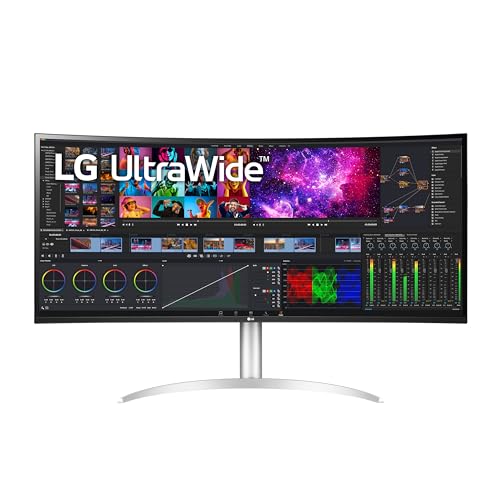
True Score
75752Experts
81350Customers
Mixed Reviews
 $1,229.99
$1,229.99Snapshot
Reasons to Buy
- Excellent Image Quality
- Superb Text Quality
- Lots of Screen Real Estate
- Thunderbolt 4 Compatibility for Daisychaining
Reasons to Avoid
- Disappointing Refresh Rate
- Low Native Contrast Ratio
Specifications

Aspect Ratio 21:9 
Available Inputs 3.5mm, DisplayPort, HDMI, USB 
Bluelight Filter n/a 
Built-In Speakers Yes 
Built-In Webcam No 
Curved Screen Yes Display Type LED 
Flicker Free Yes HDMI Inputs 2 HDR Format HDR10 High Dynamic Range (HDR) Yes Max Resolution 5120 x 2160 
Panel Type IPS Refresh Rate 71 Hz 
Response Time 5 ms 
Rotating Screen – Screen size 40″ 
Sync Technology AMD FreeSync All Specs
Test Results
Brightness (nits) 254 Contrast Ratio (as ratio x:1) 1,087 Color Gamut/Accuracy % (DCI P3 xy) 94 Color Gamut/Accuracy % (DCI P3 uv) 0 Color Gamut % (sRGB Coverage xy) 100 Color Gamut % (Adobe RGB Coverage xy) 90 All Retailers
- $1,229.99
Availability
In StockFree Shipping
No - $1,229.99$1,800Save $570
Availability
In StockFree Shipping
No - $1,799.99
Availability
Free Shipping
Yes
Our Verdict
The LG 40WP95C W is a superb monitor for gamers who prioritize immersive experiences. Its broad 40″ curved display and 21:9 aspect ratio deliver an expansive field of view. Its performance metrics and high-end price make it a strong contender for users seeking value in a reliable ultrawide monitor. Ideal for casual gaming, streaming, and content creation, this monitor caters to the multifaceted user who appreciates gaming prowess and productivity capabilities.
If you’re a casual gamer or a content creator, the input lag of 9.3 ms and response time of 8.6 ms make actions on-screen crisp, essential for games demanding quick reflexes. However, its refresh rate caps at 71 Hz, which, while sufficient for casual gaming and immersive single-player titles, might not satisfy the hardcore competitive gaming audience.
When considering visual performance, its contrast ratio of 1087:1, alongside a DCI P3 color gamut of 94.4%, ensures vibrant and accurate colors and black levels, crucial for creative work like video editing and graphic design. Its brightness levels peak at 254 nits, providing clarity even in well-lit environments, although competitive gamers might seek higher brightness for optimal visibility.
If you’re into streaming, casual gaming, or content creation, the monitor’s performance across its test criteria suggests it’s more than capable. The commendable color accuracy and contrast ratio make it a versatile option. The trade-off comes with its steep premium price, lower refresh rate, and slightly less responsiveness than the other monitors on our list, which may discourage those prioritizing high-speed competitive play. Nonetheless, considering its strengths, it remains an attractive widescreen option if you need it for graphic design, video editing, and casual gaming.
Which Criteria Matters for Testing Best FreeSync Gaming Monitors?
By focusing on these criteria (2 required, 1 nice to have), anyone can quickly and easily compare these computer monitors and how they’ll perform. This helps you make an informed decision and purchase the best FreeSync monitor.
| CRITERIA | RANGE | REQUIRED | DEFINITION |
|---|---|---|---|
| Input Lag | < 10 ms | Yes | The time it takes for the monitor to register inputs from the user and process them as action. |
| Contrast Ratio | >1000:1 | Yes | The difference in brightness between the whites (lit sections) and blacks (dim or unlit sections) of a monitor panel. |
| Color Gamut % (sRGB Coverage xy) | > 90% | No (Nice to have) | How much of the sRGB color gamut is covered by the monitor, which helps indicate color accuracy for web content and games. |
Our Trusted Data Sources
We looked at 110+ computer monitor reviewers and found that 33 are trustworthy (60%+ Trust Rating). The three we have listed below are our most trusted for computer monitors.
- Samuel Breton – Rtings, MuckRack
- Chris Eberle – Tom’s Hardware, LinkedIn
- Tony Hoffman – PC Mag, MuckRack
Interested in a comprehensive analysis of our data sources? We’ve got you covered. Below, you’ll find a detailed list of every computer monitor review website we’ve identified, organized by their respective Trust Ratings from highest to lowest. But we didn’t stop there. We’ve meticulously reviewed each publication and verified the data by checking whether the authors have bio links to MuckRack or LinkedIn. We’re committed to not only checking the facts but ensuring their veracity.
Computer Monitor Test Data & Results
1. Input Lag (ms) Test Results
Input Lag (ms)
< 10 ms
Acceptable range of performance
Definition: The amount of time it takes for a monitor to register an input from the user and display it.
Units of Measurement: Milliseconds (ms)
Tools to Measure: Input Lag Meter
Why It’s Important:
Input lag introduces artificial delay when gaming, which creates a mismatch between your reactions and on-screen action and creates frustration.
Input lag is more of a concern when it comes to gaming, but if you plan on using a monitor for a bit of gaming when you aren’t focused on productivity, editing or other tasks, lower values help improve responsiveness. High input lag means your actions take longer to register on the monitor, effectively introducing an artificial delay to your reactions.
It’s for this reason that we generally recommend an input lag under 10 ms. This ensures the delay that’s introduced has minimal impact on your reactions to what’s happening on screen. It’s important to note that a high input lag won’t have any real effect on anything that isn’t gaming, so it can be safely ignored if you don’t plan on gaming on your monitor.
Input Lag (in ms; lower is better)
2. Contrast Ratio (as ratio, x:1) Test Results
Contrast Ratio
> 1000:1
Acceptable range of performance
Definition: How bright the monitor will get, usually under specific testing conditions, like 10% windows (which means 10% of the screen is a white box.)
Units of Measurement: Ratio
Tools to Measure: Luminance meter or photometer or colorimeter
Why It’s Important:
Contrast ratio is how dynamic images are given detail and dramatic effect, with very dark areas appearing truly dark, while bright areas are bright and pop.
Contrast ratio is responsible for making images appear “dynamic” and “dramatic.” By having a good contrast ratio, a monitor is able to recreate dramatic differences between light and dark spots in scenes, images and games accurately.
At a minimum, we recommend a contrast ratio of 1000:1, as this will do a good enough job at allow for detail in dark scenes and images. If contrast ratio gets too low, the picture quality suffers, and the monitor performs worse across the board, no matter the lighting condition. By getting a monitor with a sufficiently high contrast ratio, you can ensure the picture quality doesn’t suffer, and dramatic scenes with stark shifts in lighting, whether they be in games or videos, are created as accurately as possible.
Contrast Ratio (higher is better)
3. Color Gamut % (sRGB Coverage xY) Test Results
Since color gamut comes in a variety of different types, there’s bound to be some confusion as to which is meant for what. sRGB is an extremely common gamut that is used for the vast majority of web content, including how YouTube videos display, and is the primary gamut used for video games.
If you’re looking for accurate colors while web browsing, watching videos or playing games, you’re going to want a coverage of at least 85%. Higher is always better and hitting 100% means that if you correctly calibrate your monitor, you should be seeing content exactly as it was intended. Higher than 100% means that more than just the standard gamut has been covered, which can create more saturated and vivid colors. Coming in under 100% means the colors are less accurate, though this doesn’t become a major issue until you start to fall under 90%.
Color Gamut % (sRGB Coverage xy)
> 85%
Acceptable range of performance
Definition: The amount of the sRGB gamut that the monitor covers.
Units of Measurement: %
Tools to Measure: Colorimeter
Why It’s Important:
The sRGB color gamut is the most commonly used gamut for most colors when browsing the web, watching videos on the web on sites like YouTube, and when playing video games.
Color Gamut SRGB (in %; higher is better)
Best FreeSync Gaming Monitors: Mistakes To Avoid
- Compatibility Oversight: Overlooking FreeSync compatibility can lead to purchasing a monitor that doesn’t support AMD’s adaptive sync technology, resulting in potential screen tearing and stuttering issues, especially when using AMD graphics cards. For those unfamiliar, understanding what FreeSync is becomes crucial; it’s a technology developed by AMD to eliminate screen tearing and stuttering by allowing the monitor to dynamically adjust its refresh rate to match the frame rate of the graphics card.
- Refresh Rate Limitations: Failing to consider the monitor’s refresh rate range can result in limited effectiveness of FreeSync technology, as the refresh rate needs to match or exceed the frame rate output of your graphics card for optimal performance. Our Asus TUF VG34VQL1B review found that this monitor offers a robust refresh rate that effectively utilizes FreeSync, making it a compelling choice for gamers seeking smooth, tear-free gaming experiences.
- Panel Type Neglect: Not evaluating panel types such as IPS, TN, or VA can lead to choosing a monitor with inferior color reproduction or viewing angles, impacting the overall visual quality and gaming experience. The best curved gaming monitors offer an immersive field of view but also utilize a panel type that ensures vibrant colors and broad viewing angles to enhance your gaming sessions.
- Response Time Oversight: Ignoring response time can result in motion blur and ghosting artifacts, affecting visual clarity during fast-paced gaming, particularly in competitive multiplayer games. For those on a tighter budget, finding the best budget gaming monitor that balances cost and performance, with adequate response times, can significantly improve your gaming experience without breaking the bank.
The Best FreeSync Gaming Monitors Tests Compared
Product |
True Score
|
Brightness
|
Contrast Ratio
|
Color Gamut (DCI P3)
|
Color Gamut (sRGB)
|
Input Lag (ms)
|
Response Time (ms)
|
Reflections % | |
|---|---|---|---|---|---|---|---|---|---|
| 85 |
|
|
|
|
|
|
| $199.99 $300 $100 |
| 82 |
|
|
|
|
|
|
| $476.99 $900 $423 |
| 82 |
|
|
|
|
|
|
| $250.00 $300 $50 |
| 78 |
|
|
|
|
|
|
| $579.99 $650 $70 |
| 75 |
|
|
|
|
|
|
| $1,229.99 |

